


ONE of the world’s oldest and most fierce motorcycling rivalries has been reignited. The rivalry began more than a century ago and it ended with a clear winner and loser before most of us were born. At least we thought it had ended. But one of the combatants, seemingly dead and buried not long after the Second World War, has been resurrected.
The major battlefield is still the American boulevard; just as it was a century ago. The weapons are still big-engined long-wheelbased heavyweight cruisers and tourers; just as they were a century ago.
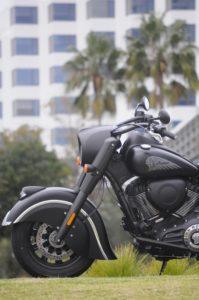
The rivals, of course, are Harley-Davidson and Indian. And while the major battlefield might be on American soil, there are minor skirmishes being played out all over the world — including right here in Perth where a flashy new Indian store in Cannington is audaciously locking eyes with the established might of Frasers in Dianella and Perth Harley-Davidson in their new digs in Beckenham.
H-D and its myriad of followers play down the historical significance of the born-again Indian brand: It’s not the same company, they say. Its not an evolution. It’s not a product built on an age-old dynasty. It’s just an old name and an old style on a new tank.
And that’s all true.
In contrast, Harley-Davidson has been in continuous operation for all of the past 114 years, carving out a place in history and becoming an economic powerhouse along the way. It’s net income in 2014 (the latest figure we can find) was US$795.53 million. Of every ten big bikes sold in the U.S. today, five of them are Harleys. No doubt about it: H-D is a huge, successful organisation. Here in Australia, Harley sells more road bikes than any other manufacturer, beating Honda in 2015 and again in 2016.
But don’t let anyone tell you that H-D executives in Milwaukee — and H-D sales teams here in Perth — aren’t worried. Like it or not, Indian is eating into Harley sales. It probably isn’t too much of a stretch to suggest every new Indian sold in Perth (or anywhere else for that matter) is a sale that Harley has missed out on. And here’s an interesting statistic I found on an American investment website: In 2015, Harley sales in the U.S. went down 3.4% while Polaris motorcycles (that’s Indian and the now-defunct Victory) went up 67%. Sure, Harley sells a lot more bikes — but Indian has caught a wave of enthusiasm and is on the way up.
The million-dollar question, of course, is whether the reborn Indian can maintain momentum. Will the new Indian survive the next decade?
The answer will have many component parts, but the most important part will be the most obvious: If people like the bikes enough, yes it will.
So, are the bikes any good?
Let’s see.
I’ve never been especially attracted to cruisers. I’ve always thought them too big, too heavy, too slow, and all trying way too hard to look like old Harley-Davidsons. And they always look like they’re going to grind off their footpegs at the very mention of a hairpin bend or a roundabout. And speaking of footpegs, what’s the story with those running boards up near the front forks? How the hell do people ride these things?
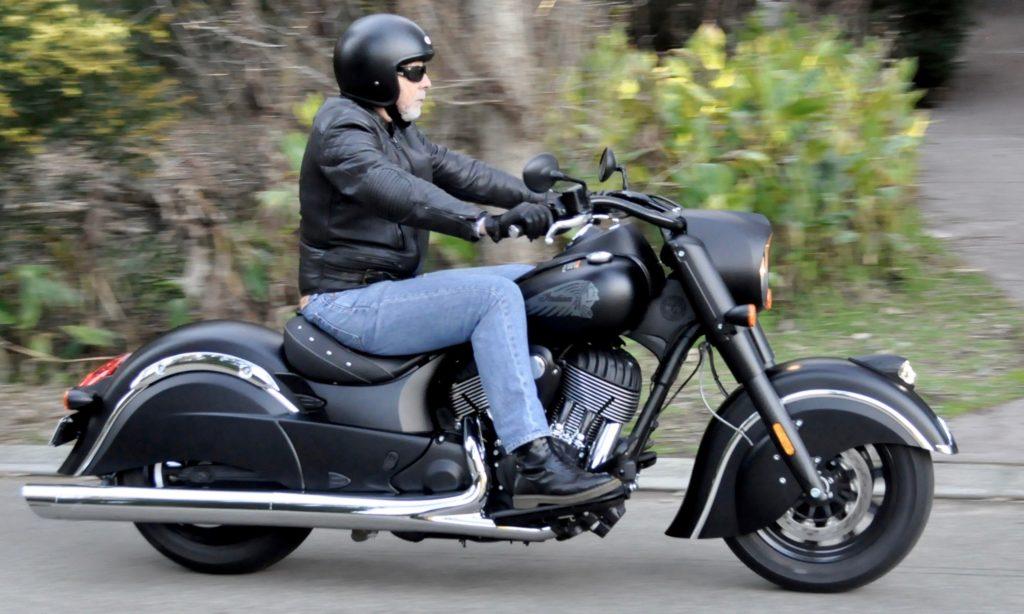
But when the nice folks at Indian Motorcycle Australia agreed to lend me a bike for a week-long test, my bike-addict personality stepped up. Truth is, show me anything with two wheels and an engine and, like an adolescent golden retriever, I want to mount it. And if the motorcycle is something out of the ordinary, my mounting desire mounts.
And so it was that I got to mount an Indian Chief Dark Horse. Half a metre longer and 150kg heavier than a Honda Fireblade, and fitted with those way-forward foot controls, it did not look like an easy rider. I mean, what if I dropped the bloody thing? I’d need half a dozen mates and a block-and-tackle to lift it back up!
How does she go?
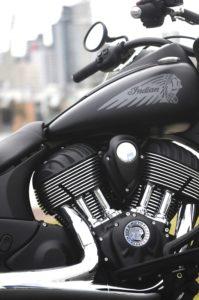
She launches from a standing start with a level of muscular enthusiasm that takes you by surprise. This is a 350kg machine, so there’s a hell of a lot of metal to shift. But this is also a machine with a seriously big motor. The Americans prefers to talk in cubic inches, but an engine capacity of 111 cubes doesn’t mean much to most of us. In my language, this is an 1811cc V-twin. That’s equivalent to two 900 Bonnevilles stuck together, with each of the 900cc halves dispatched with just one cylinder. Yep, these are big-mutha pistons.
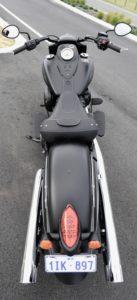 I don’t have the kit to measure acceleration times, but Google tells me the Dark Horse will carry you from zip to 100kmh in about 4.5 seconds. That’s not sports bike quick, but it is hang-on quick. And a 0-100 figure doesn’t measure the urge – just the end point. With 350kg underneath you, with your arms and legs pointing forwards, and with your backbone pointing pretty much perpendicular, it feels even quicker than the raw statistic. Sports bikes would eat the Indian for breakfast on a long straight, but they would be wise to be nervous at the traffic lights.
I don’t have the kit to measure acceleration times, but Google tells me the Dark Horse will carry you from zip to 100kmh in about 4.5 seconds. That’s not sports bike quick, but it is hang-on quick. And a 0-100 figure doesn’t measure the urge – just the end point. With 350kg underneath you, with your arms and legs pointing forwards, and with your backbone pointing pretty much perpendicular, it feels even quicker than the raw statistic. Sports bikes would eat the Indian for breakfast on a long straight, but they would be wise to be nervous at the traffic lights.
As you’d expect, the power lives way down low in the rev range. Crack the throttle from 2000rpm in any gear and she gathers pace rapidly, sounding unsurprisingly like a Harley and feeling unsurprisingly like a great big bike being propelled forwards, rapidly, by a great big engine. Hold gear until about 3200rpm, shift up, and launch again. Gosh this is fun.
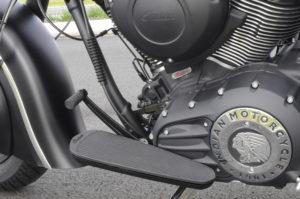 The gearbox is not subtle. It kur-lunks from neutral into first, and kur-lunks into every gear thereafter. I found a false neutral or two on my first ride, but they disappeared as my left foot learned the ropes. There are six gears, with top being a true overdrive. You won’t use sixth in town, and you’ll only use it at cruising speed on the highway. If there’s any traffic with you, you’ll be happy in fifth — maybe even fourth — to stay in touch with the rapid-acceleration zone.
The gearbox is not subtle. It kur-lunks from neutral into first, and kur-lunks into every gear thereafter. I found a false neutral or two on my first ride, but they disappeared as my left foot learned the ropes. There are six gears, with top being a true overdrive. You won’t use sixth in town, and you’ll only use it at cruising speed on the highway. If there’s any traffic with you, you’ll be happy in fifth — maybe even fourth — to stay in touch with the rapid-acceleration zone.
Speaking of the highway and rapid acceleration, I found a bunch of victims on Brookton Highway, and overtaking was a huge rush. (Sorry if I frightened you, Camry chick.)
How does she stop?
She stops straight, true and quick. Despite looking like something that might have been made in 1945 (more about that shortly), there’s nothing old-fashioned about the Indian’s stoppers.
Twin 300mm discs up front are grabbed by four-piston calipers, providing most of the bite, while a single disc (same size) gets two pistons up the aft end for stability more than power.
ABS is standard (and welcome for test pilots who don’t really want to lock up the wheels) and gives you the confidence to use all of the anchoring power.
How does she handle?
There are two questions here — low speed and ride speed — but the answers are the same: She handles very well, and a lot better than you expect her to.
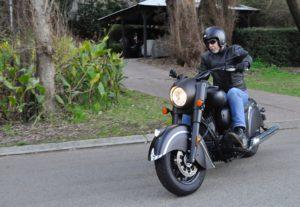
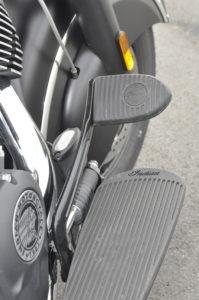
Up to riding speed, and it takes a while to feel entirely comfortable in the easy-rider position. I wanted to lean forward, but the seat, boards and ‘bars wouldn’t let me. Sure enough, I had to go with the flow: lean back, arms and feet forwards, think about Peter Fonda, and it all starts to make ergonomic sense. Ten minutes later and it felt completely right. A few days later and I started to wonder about riding proper-fast in this position.
(I remember once riding through the karri forest down south on my old Guzzi LeMans, and being caught and passed by a bloke on a Harley Sportster. I couldn’t believe how fast he was taking the corners. But I believe it now. Yes, riding fast in chopper-pose is absolutely do-able.)
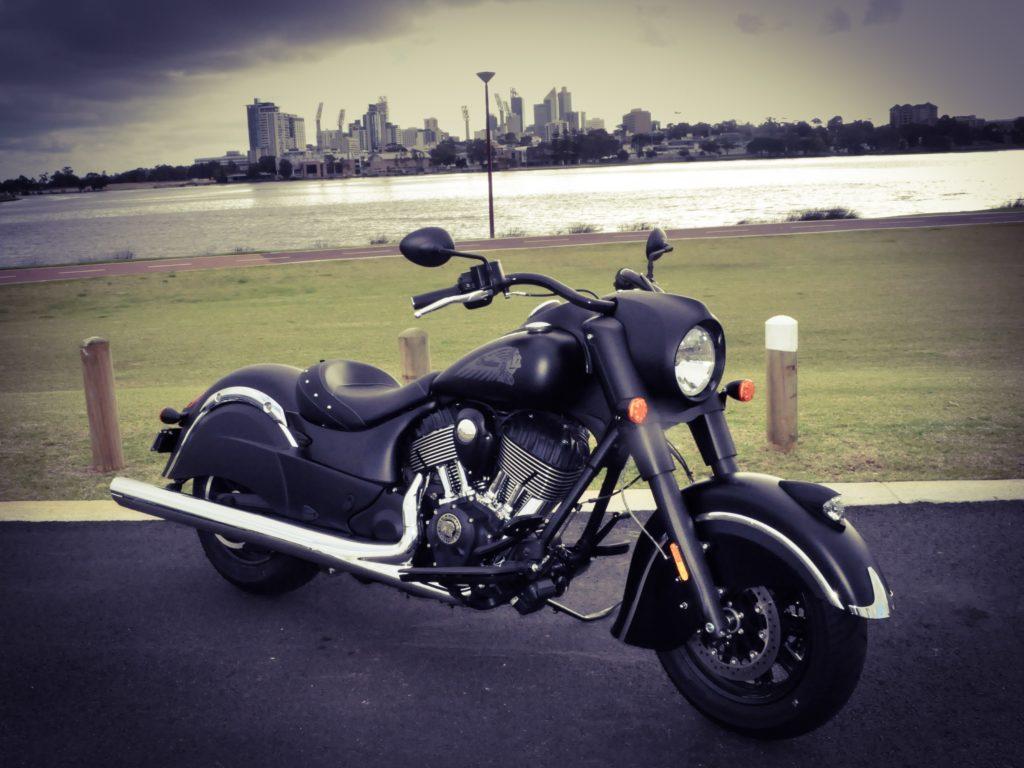
Town or country?
An interesting question, this one. If someone told me I was going to be riding a bike that weighed one-third of a Hyundai Getz and had an 1800cc engine, I would assume the highway to be its natural territory.
But I felt right at home in the city. The riding position was neat, the power was awesome, and the balance was amazing. This great big bike is a joy around town. Remember that scene in Terminator 2, when Arnie Schwazenegger jumps his 1990 Harley-Davidson Fat Boy off a bridge and onto a freeway, flip-cocking his Model 1887 shotgun as he rides? Sure you do. It was probably the coolest chase scene ever made. Well, that’s how you feel riding the Dark Horse. Just like that. But without the gun. (Preferably.)
I didn’t feel at home on the highway aboard the Dark Horse. Maybe I’d get used to it, but an hour at speed left me with a sore bum and aching quads. With no fairing and an upright stance, you feel like the sail on a yacht — the wind catches you full-chest and tries to rip you off.
Ease off the throttle and things get much more pleasant, of course. Yes, you could ride this bike a long way. But if you’re in a hurry and you want to be comfortable, there’s a long list of bikes you’d choose ahead of this one. Mind you, if you can only afford one bike (especially a $28,000 one) and you’ll do most of your riding in town and just an occasional blast on the open road, a bike like this actually starts to make sense.
Retro versus techno
This is the big game, right here. This is the fight that Polaris has brazenly picked with Harley-Davidson. Retro versus techno, history versus future, style versus substance, art versus science, heart versus head.
I strongly suspect there was a pivotal moment a few years ago when the folks at Polaris decided its Victory line of bikes just wasn’t going to work in the marketplace. The Victory bikes were excellent machines. Brutish but beautiful, exceptionally well built, a superb balance of form and function, with the style and substance to challenge H-D on every level.
Well, almost every level. Every level but one: History.
Harleys have history and, in America at least, history sells. They’re a proud bunch, the Yanks, and their pride has its roots in U.S. history. When Polaris bought the rights to the Indian brand, it bought a great big chunk of New York and apple pie Americanism with a lifeline stretching waaay back — not just as far as Harley, but further than Harley.
H-D was founded in 1903.
Indian was founded in 1901.
Having pulled off a master-stroke equivalent to finding a woman with longer hair than Rapunzel, the challenge was to create products that milked every ounce of heartstring-tugging historic credibility possible. The new Indian products couldn’t claim 1901-2017 evolution, but that didn’t mean they couldn’t build bikes that looked like they had 1901-2017 evolution.
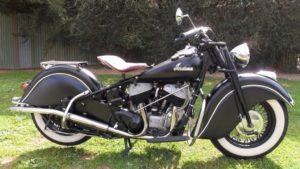 And that’s what we have here. If you squint your eyes and look at the Dark Horse, then squint again and look at a 1945 Indian Chief, the visual connections are very strong: The engine, of course, and especially the external push rods tubes. The heavily valanced wheels. The single seat. The swept-back bars. The speedo on the fuel tank.
And that’s what we have here. If you squint your eyes and look at the Dark Horse, then squint again and look at a 1945 Indian Chief, the visual connections are very strong: The engine, of course, and especially the external push rods tubes. The heavily valanced wheels. The single seat. The swept-back bars. The speedo on the fuel tank. 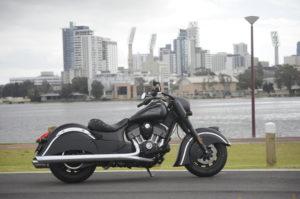
The major differences are technological, not stylistic. ABS disc brakes, fuel injection, fly-by-wire fuelling, cruise control, trip computer, keyless starting, telescopic forks, single-shock rear suspension. It’s as if the designers started with an old Chief and then just up-specced it by 72 years. In fact, that’s exactly what it’s like.
It’s brilliant business, of course. With the Indian brand at its disposal, Polaris became the only manufacturer of big cruisers that didn’t look like it was trying to clone a Harley. It could clone an Indian instead, without looking like it was somehow cheating. And they’ve done a stellar job.
Who should buy one?
Anyone who has ever thought they’d like a Harley but couldn’t bring themselves to do it, and anyone who’s father once owned an Indian.
Oh, and anyone who wants a cruiser that’s neither a Harley or a copy of a Harley.
What do we really think?
This is a great bike. It’s a hoot to ride. It has presence in every sense of the word. The styling is a brilliant blend of old and new. If this is the starting point for the resurrected Indian, the future looks bright.
The pillion report
By The Missus
Hey. What the hell?! Where’s my seat?
Indian versus Harley: the back story
The first Indian Chief was made in 1922. At 1000cc, it was a big bike indeed. Indian’s ‘little’ bike was the Scout – still a V-twin, but carrying about half the engine capacity. The Scout was the sports bike of its time (it was a 1920 Scout that Burt Munro — of ‘The World’s Fastest Indian’ fame — used at Bonneville) while the Chief was built for cruising the boulevard and the highway, going head-to-head against Harley’s big bikes for more than 30 years. 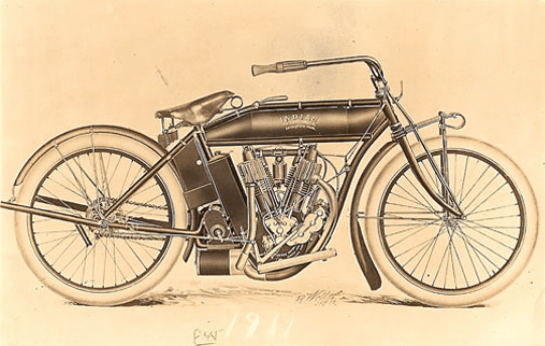
Indian hit the ground a few years earlier than Harley. The Indian factory race team took the first three places in the 1911 Isle of Man TT and, during the 1910s, Indian became the largest manufacturer of motorcycles in the world. Indian did very well from the First World War, channelling most of its production to the US Army. But domestic owners did not do so well. Dealers couldn’t get hold of stock or spare parts, and many owners abandoned their Indians and turned elsewhere for their motorcycling pleasure. Like Harley-Davidson, for example.
When the war ended, Indian struggled to recover lost ground in the US. By 1920, Harley was the world’s dominant manufacturer. The Great Depression hit both companies hard (Harley-Davidson reportedly sold more than 20,000 bikes in 1929 but less than 4,000 in 1933) but they adopted different survival strategies.
Indian decided to go up-market. In hindsight, it was probably a fatal mistake. A four-cylinder engine and a bunch of technological innovations were introduced. Some were great but others, not so much.
Harley-Davidson stuck to it’s knitting. The company continued to concentrate on performance and a gradual evolution of it’s line-up. Crucially, H-D won favour with the US Army. When World War II rolled around, it was Harley’s WLA that the Army preferred. The Army account kept H-D afloat.
Indian, on the other hand, was weak and vulnerable. It’s last Chief was sold in 1953 and, the same year, the company went bankrupt.
There have been multiple attempts to revive the Indian brand but none really got off the ground until 2011 when American snowmobile giant Polaris bought the name and invested heavily to bring the long-dead Indian back to life.
DIMENSIONS

ENGINE
DRIVETRAIN
PERFORMANCE
GEAR RATIO (OVERALL)
SUSPENSION
CHASSIS
DIMENSIONS
FEATURES
STANDARD
ELECTRICAL
WANT MORE INFO?
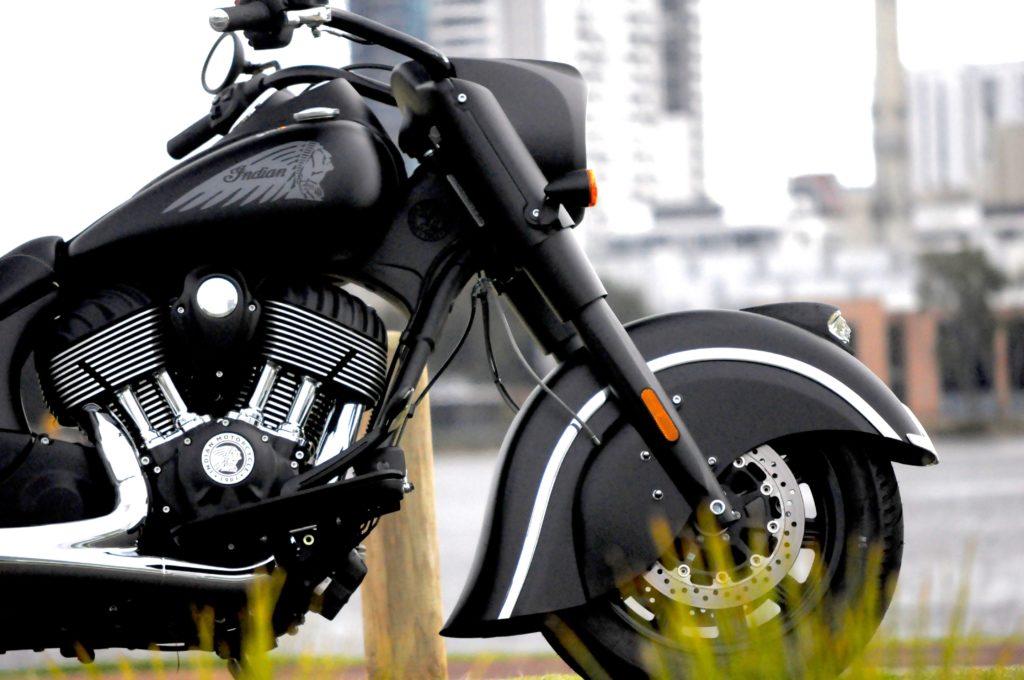
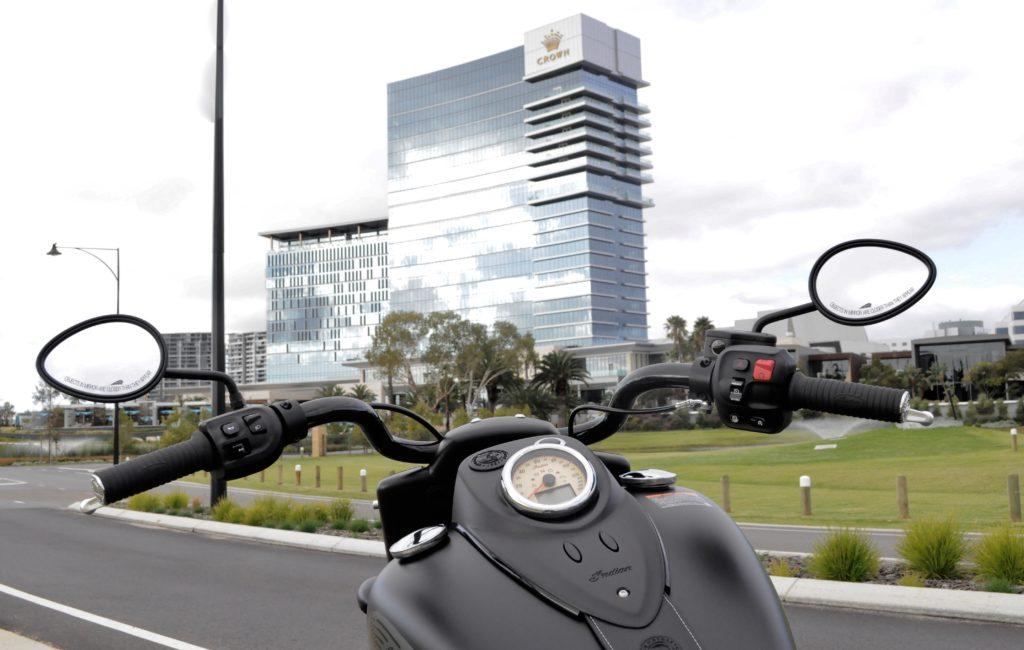
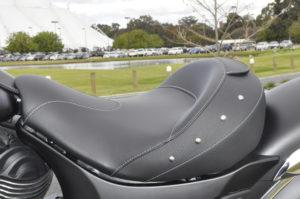
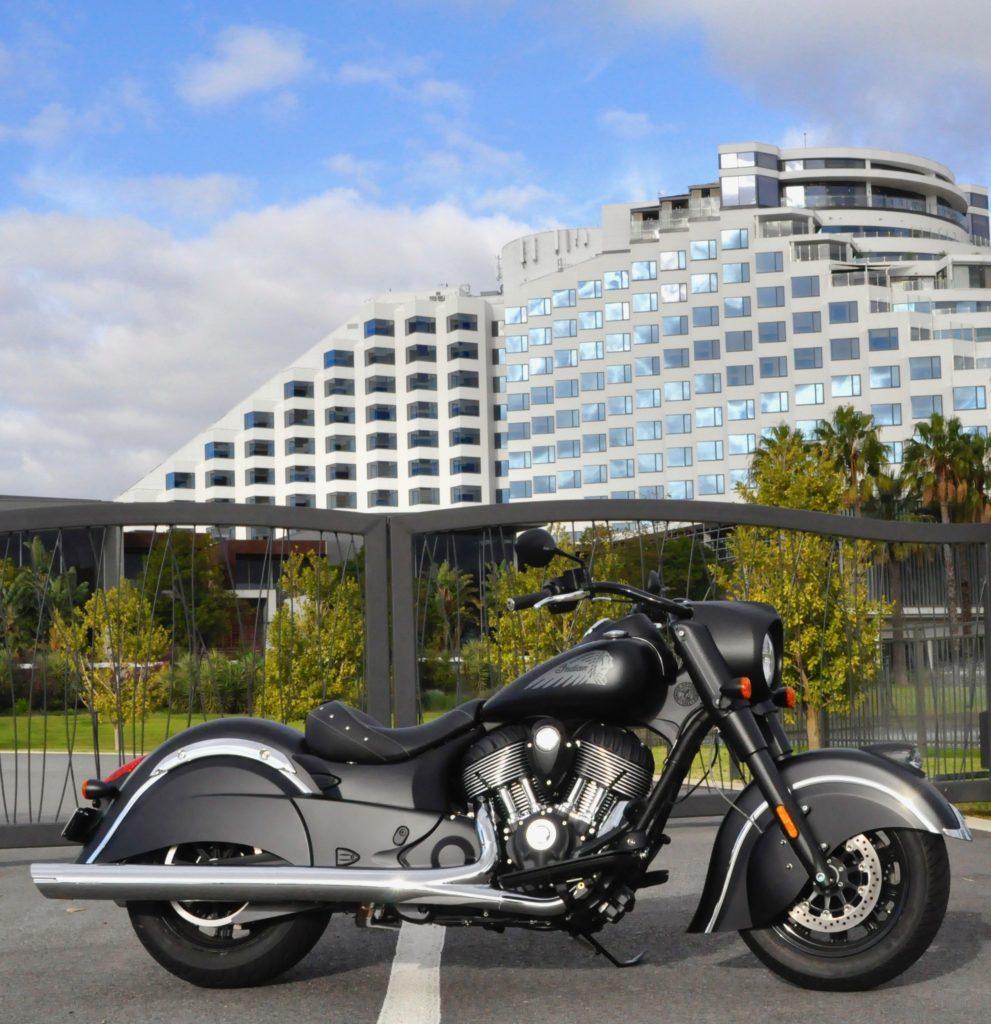
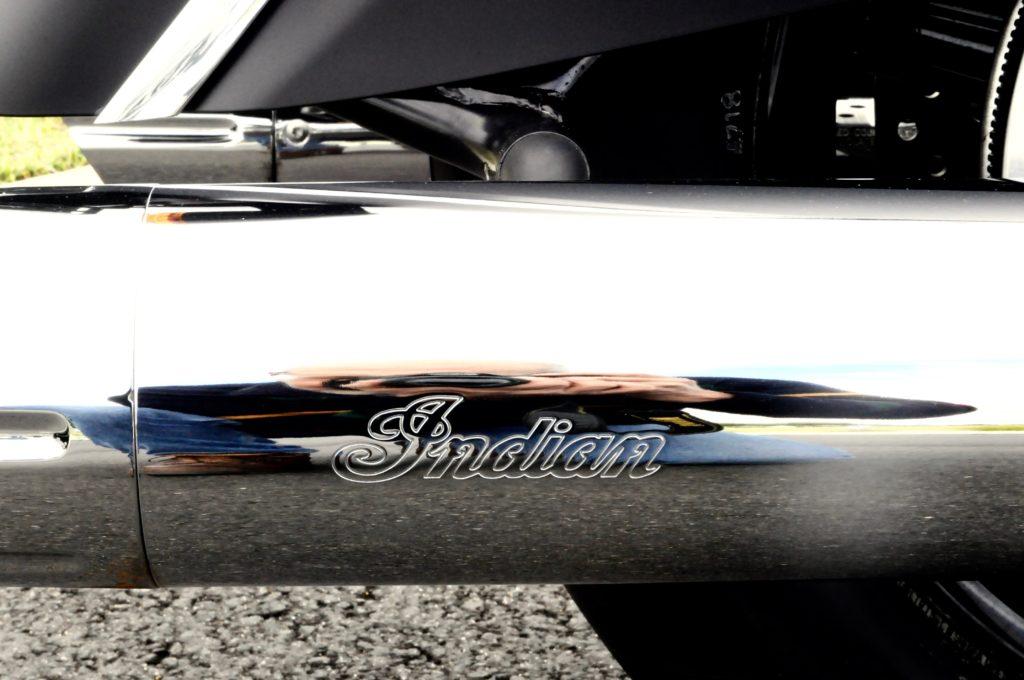
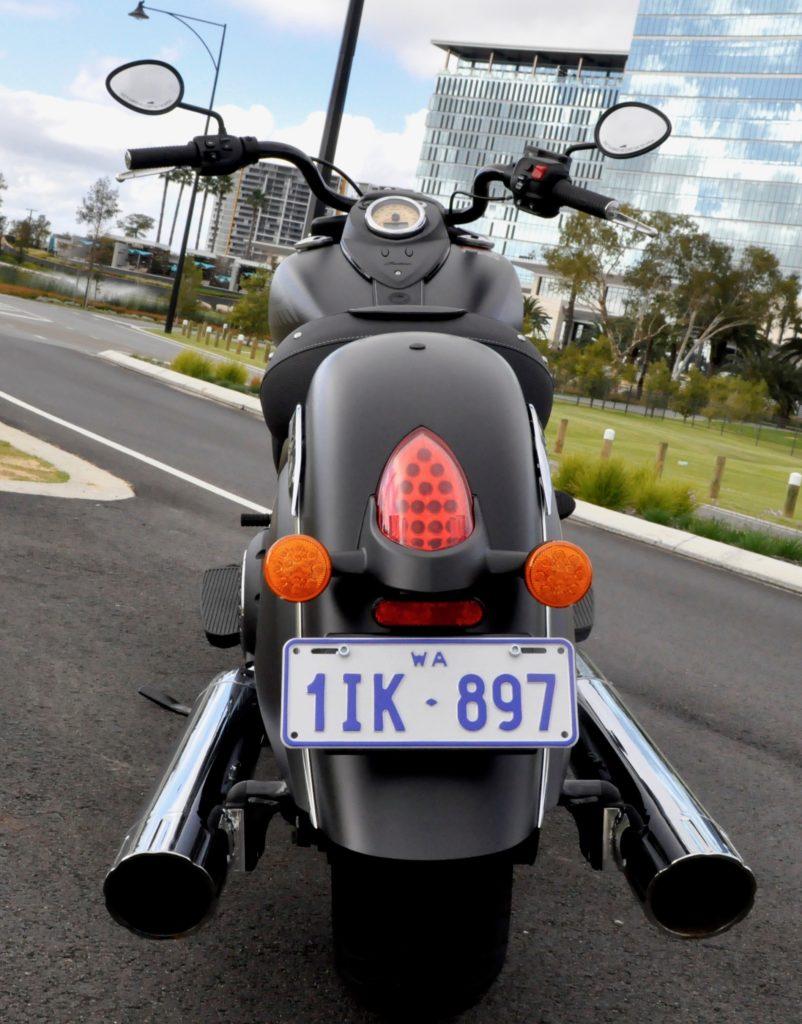
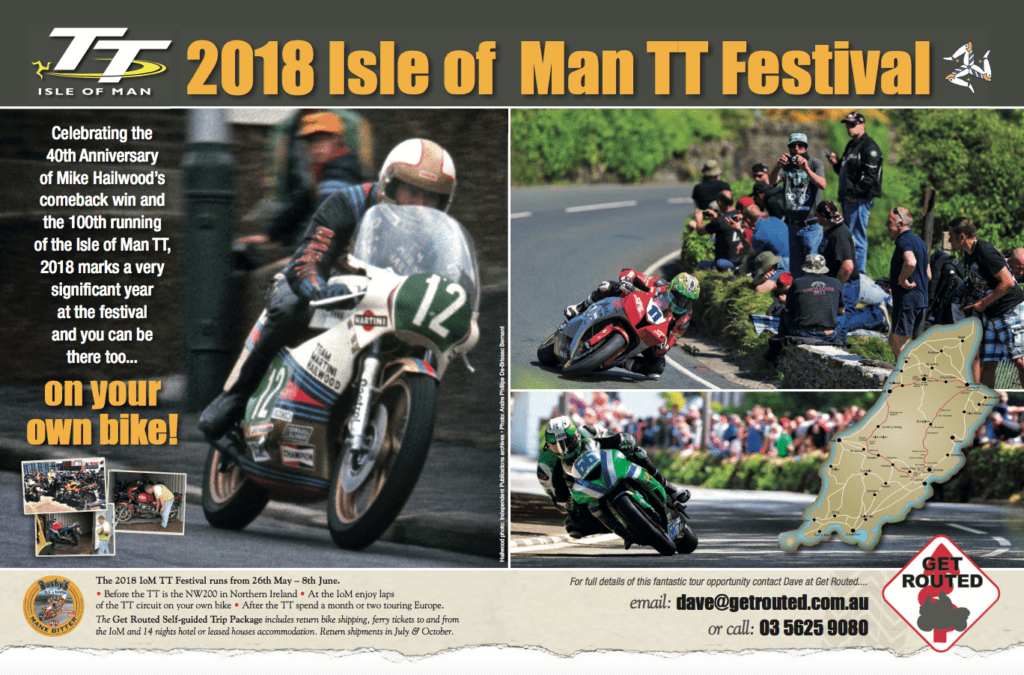


Have just over 18,000km in 3 years on my Chief Classic .
Best investment ever !!!
Brilliant! Very entertaining read mate 🙂
Thank you for this amazing write up. I would never buy a cruiser, just doesn’t fit my character but I found your story compelling right the way through. Different horses for different riders.
Excellent article Pete, spot on with the comparison I reckon